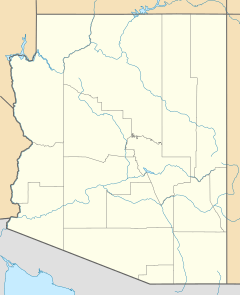Nahata Dziil, Arizona facts for kids
Quick facts for kids
Nahata Dziil, Arizona
|
|
|---|---|
| Country | United States |
| State | Arizona |
| County | Apache |
| Area | |
| • Total | 550 sq mi (1,400 km2) |
| Elevation | 6,030 ft (1,840 m) |
| Population
(2010)
|
|
| • Total | 1,731 |
| • Density | 3.147/sq mi (1.215/km2) |
| Time zone | UTC-7 (Mountain (MST)) |
| • Summer (DST) | UTC-7 (MST) |
| Area code(s) | 928 |
| FIPS code | 04-TS502 |
| GNIS feature ID | 2419027 |
Nahata Dziil, also sometimes called Nahatadzill, is a special community located in Apache County, Arizona, in the United States. It is known as a "Chapter" within the Navajo Nation. This means it's like a local government area for the Navajo people.
Nahata Dziil is headquartered near Sanders, Arizona. It covers a large area of about 352,000 acres, which is roughly 550 square miles. In 2010, about 1,731 people lived here, and most of them were Navajo.
Contents
Discovering Nahata Dziil
Nahata Dziil is an important part of the Navajo Nation. It serves as a local hub for its residents. The community helps manage local services and represents the people living there.
A Chapter in the Navajo Nation is similar to a local town or district government. It helps organize community activities and services. Chapters are important for the Navajo people to manage their local affairs.
Where is Nahata Dziil Located?
Nahata Dziil is found in the eastern part of Arizona. It is specifically in Apache County. This area is known for its beautiful desert landscapes and unique cultural heritage.
Part of the Fort Defiance Agency
Nahata Dziil is one of the Chapters that belong to the Fort Defiance Agency. The Navajo Nation is divided into five main agencies. These agencies help oversee different parts of the large Navajo territory.
The People of Nahata Dziil
The community of Nahata Dziil is home to many people. According to the 2010 census, 1,731 people lived there. A large majority, about 1,572 people, were members of the Navajo Nation.
A Significant Milestone
Nahata Dziil holds a special place in the history of the Navajo Nation. In 1991, it became the 110th and final Chapter to be officially recognized. This was an important step in completing the structure of the Navajo Nation's local governance.



